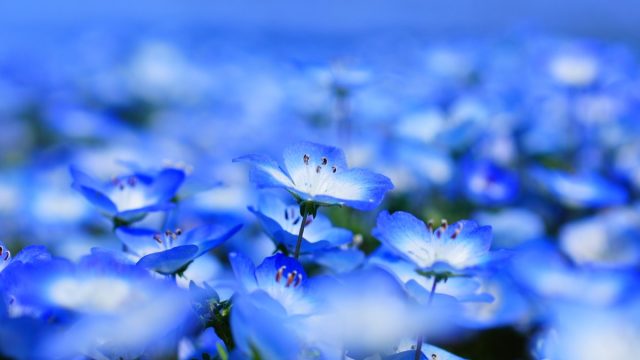This Is Why the Color Blue Is Actually Rare in Nature

The world’s most favorite color is blue. According to a YouGov poll, pretty much every country on the planet lists it as such. Plus, it’s delighted and intrigued scientists and artists (see: Picasso’s Blue Period) alike for centuries, and is a number-one choice for everything from house paint to the jeans you’re probably wearing this very minute. Yet it turns out the color is surprisingly hard to come by in nature.
Case in point: Animals come in all variety of colors, but how many can you think of that are actually blue? Maybe the blue jay or the blue whale (which isn’t really all that blue anyway). Then there are the less common, but far more striking, creatures with eye-popping blue colors, such as butterflies, frogs, and parrots.
Why is blue so uncommon? Most pigments that animals exhibit on their fur, skin or feathers due is related to the food they consume. Salmon is pink because of the pink shellfish they eat. Goldfinches get that yellow color from the yellow flowers they consume. But while pigments like red, brown, orange, and yellow come from the food animals eat, that’s not the case with blue. In fact, that blue you see is not really a pigment at all.
When blue does appear in nature, it’s related to other reasons than pigment. In many animals, that blue color is due to the structure of the molecules and the way they reflect light. For example, the blue morpho butterfly (which you might recognize as the butterfly emoji), gets its color from the fact that its wing scales are shaped in ridges that causes sunlight to bend in such a way that blue light, at just the right wavelength, makes it to our eye. If the scales were shaped differently or if something other than air was filling the gaps between them, the blue would vanish.
Blue birds, such as the blue jay, get their color through a similar, but slightly different process: each feather is made up of light-scattering, microscopic beads spaced in a way that everything except blue light is cancelled out. Blue on any animal (including humans’ blue eyes) is due to some kind of light reflection of this type. The only exception is the obrina olivewing butterfly, which is the only known animal in nature that produces blue pigment.
Why is the color blue almost exclusively found in blue structures rather than pigments? Scientists can’t say for sure, but a popular theory is that as developing a blue color became beneficial (for survival and communication), it proved easier, from an evolutionary perspective, for these animals to change the shapes of their bodies in microscopic ways than to rewrite the rules of chemistry.
A similar situation can be seen in plants, where blue pigment also doesn’t really exist. According to David Lee, author of Nature’s Palette: The Science of Plant Color and a retired professor in the Department of Biological Sciences at Florida International University in Miami, less than 10 percent of the 280,000 species of flowering plants produce blue flowers.
Those plants that do appear blue are in fact often using a red pigment known as anthocyanin. Through pH shifts and a mixing of pigments, combined with the reflection of natural light, the plants are able to generate the appearance of a naturally occurring, blue color. That’s the reason why plants such as bluebells, hydrangeas and morning glories appear various shades of blue, when in fact, as Lee explains, “There is no true blue pigment in plants.” And for more fascinating info about the color wheel, here are 30 Crazy Facts About Colors That Will Blow Your Mind.
To discover more amazing secrets about living your best life, click here to follow us on Instagram!